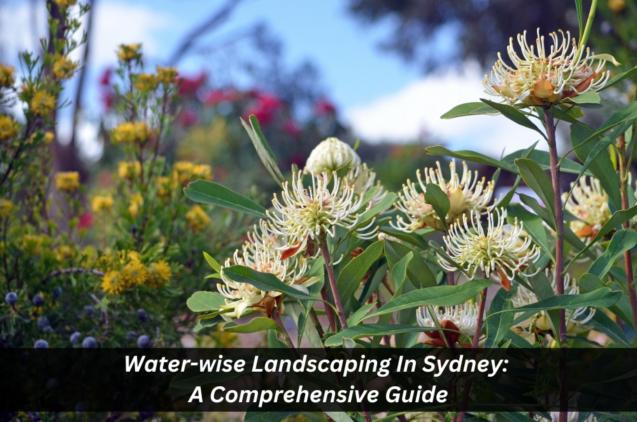
Protect Your Home: Essential Tree Care Tips
By A1 Bargain Gardening and Landscaping Services|August 05, 2024
A falling tree can quickly turn a quiet evening into a dangerous situation. This is often an overlooked risk by many homeowners. With the weather warming up, it's best to have your trees inspected regarding their health. Winter may have made some of your trees weak, which could lead them to damage. Falling branches can be hazardous, and neglecting tree care can worsen problems. To protect your home and family, inspect your trees for signs of trouble. Consider professional services like tree lopping, pruning, or removal if you see dead or dying branches.
The dangers of overgrown trees
Untended trees are beautiful. They provide shade, purify the air, and provide a habitat for thousands of creatures. However, not all trees are created equal. Specific species have varied growth patterns, root systems, and vulnerabilities to pests and diseases. Knowing your tree types can be instrumental in proper care.
Identifying tree hazards
You do not have to have an arboriculture degree to recognise potential problems. Monitoring trees can help prevent minor issues from becoming major headaches. Look for dead or dying branches, fissures in the trunk, or a leaning tree. These are some of the sure signs of impending danger.
Tree trimming basics
You must be very safe before you even think of touching a saw. Tree lopping, per se, is dangerous, so excellent preparation is essential. Pants, gloves, sturdy shoes, and safety glasses are the minimum safety equipment you should wear. If you will be working at height, consider a safety harness.
1. Assess the tree
Not all tree-trimming jobs are created equal. A small and perfectly healthy tree with minimal growth might be a do-it-yourself job, while larger or larger trees should be left to professionals. Before commencement, consider the size of the tree, its condition, and your skill level.
2 Choose the right tools.
You will need many different tools to do the job. Essentials include hand pruners, loppers, a pruning saw, and a pole saw for those higher branches. But more giant limbs may call for a chainsaw—these are high-risk tools that demand proper training on their use and handling.
3. Understand tree anatomy
Knowing a tree's basic structure can help you make informed pruning decisions. Branches have a collar of bark where they join the trunk. Cutting outside this collar can damage the tree while cutting inside can leave a stub prone to decay.
4. Timing is everything
The best time to prune most trees is before new growth starts in late winter or early spring. Some trees, like maples, which bleed sap in the spring, may be best pruned during summer. Avoid autumn pruning, as this encourages new growth sensitive to winter frosts.
5. Make clean cuts
Proper pruning techniques are essential for tree health. Use sharp tools to make clean cuts and prevent disease entry points. Cut back to a lateral branch or a bud facing outward to encourage balanced growth.
6. Avoid topping
Topping also refers to substantially trimming a tree to a stub, which is highly harmful. It weakens the tree and makes it prone to diseases and pests. It also creates a great mess and can encourage unwanted regrowth.
7. Consider hiring a pro.
If you need clarification on doing any part of the tree trimming, it's always best to consult a certified arborist. They have the proper equipment and knowledge to care for your trees safely and effectively.
Tree care and home insurance
A well-maintained tree can help lower your home insurance premiums. Insurance companies love to see you taking care of your property. However, when a tree does damage, having the right coverage in place is critical.
Attention to your trees is an investment in home safety and value through real estate. Know when you can do it yourself and when you need professional help. This knowledge will allow the use of the outdoor space safely without fear of disaster. Of course, prevention is better than cure. So, grab those pruning shears and get trimming!
The dangers of overgrown trees
Untended trees are beautiful. They provide shade, purify the air, and provide a habitat for thousands of creatures. However, not all trees are created equal. Specific species have varied growth patterns, root systems, and vulnerabilities to pests and diseases. Knowing your tree types can be instrumental in proper care.
- Roof damage: Heavy branches can dislodge tiles or bend metal sheeting.
- Gutter blockage: Rainwater becomes trapped by leaves and debris, leading to potential overflows and water damage.
- Falling branches: A constant threat capable of causing severe injury or even fatalities.
- Power outages: Overhanging branches can contact power lines, resulting in fires or outages.
- Property damage: Dense foliage can block sunlight, preventing grass and other plants from growing beneath them.
- Pest and vermin problems: Overgrown trees can provide ideal hiding places for rodents and insects.
- Structural damage: Tree roots can grow into underground pipes and drains, causing blockages and damage. Large tree roots can even lift concrete slabs or paveways in severe cases.
Identifying tree hazards
You do not have to have an arboriculture degree to recognise potential problems. Monitoring trees can help prevent minor issues from becoming major headaches. Look for dead or dying branches, fissures in the trunk, or a leaning tree. These are some of the sure signs of impending danger.
- Deadwood: These weak and brittle limbs are an accident waiting to happen. They come off quickly in any gusty wind and sometimes on a still day.
- Cracks and cavities: Injuries to a tree trunk or branch are physical weaknesses that can predispose it to breakage.
- Leaning trees: A leaning stance away from the vertical usually indicates unstable roots or internal decay.
- Excessive growth: This may cause imbalances in the tree, thus making it easy to topple.
- Fungal growth: Mushrooms or bracket fungi on a tree's base usually show internal decay.
- Cavities: Hollow spots in the trunk or branches can indicate damage to the tree's structure.
Tree trimming basics
You must be very safe before you even think of touching a saw. Tree lopping, per se, is dangerous, so excellent preparation is essential. Pants, gloves, sturdy shoes, and safety glasses are the minimum safety equipment you should wear. If you will be working at height, consider a safety harness.
1. Assess the tree
Not all tree-trimming jobs are created equal. A small and perfectly healthy tree with minimal growth might be a do-it-yourself job, while larger or larger trees should be left to professionals. Before commencement, consider the size of the tree, its condition, and your skill level.
2 Choose the right tools.
You will need many different tools to do the job. Essentials include hand pruners, loppers, a pruning saw, and a pole saw for those higher branches. But more giant limbs may call for a chainsaw—these are high-risk tools that demand proper training on their use and handling.
3. Understand tree anatomy
Knowing a tree's basic structure can help you make informed pruning decisions. Branches have a collar of bark where they join the trunk. Cutting outside this collar can damage the tree while cutting inside can leave a stub prone to decay.
4. Timing is everything
The best time to prune most trees is before new growth starts in late winter or early spring. Some trees, like maples, which bleed sap in the spring, may be best pruned during summer. Avoid autumn pruning, as this encourages new growth sensitive to winter frosts.
5. Make clean cuts
Proper pruning techniques are essential for tree health. Use sharp tools to make clean cuts and prevent disease entry points. Cut back to a lateral branch or a bud facing outward to encourage balanced growth.
6. Avoid topping
Topping also refers to substantially trimming a tree to a stub, which is highly harmful. It weakens the tree and makes it prone to diseases and pests. It also creates a great mess and can encourage unwanted regrowth.
7. Consider hiring a pro.
If you need clarification on doing any part of the tree trimming, it's always best to consult a certified arborist. They have the proper equipment and knowledge to care for your trees safely and effectively.
Tree care and home insurance
A well-maintained tree can help lower your home insurance premiums. Insurance companies love to see you taking care of your property. However, when a tree does damage, having the right coverage in place is critical.
- Review your policy: Know what's covered under your policy for tree-related damage.
- Keep tree care records: Save receipts for all tree trimming and maintenance work.
- Take photos: Document the condition of trees on your property regularly.
Attention to your trees is an investment in home safety and value through real estate. Know when you can do it yourself and when you need professional help. This knowledge will allow the use of the outdoor space safely without fear of disaster. Of course, prevention is better than cure. So, grab those pruning shears and get trimming!



